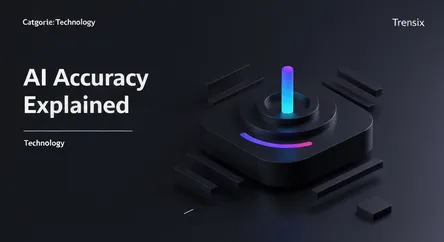Technology
AI Accuracy Explained

Discover AI accuracy, a key metric for evaluating how often a machine learning model makes correct predictions. Learn why it's vital for reliable AI.
What is it?
AI accuracy is a performance metric that measures the proportion of correct predictions made by a machine learning model. It's calculated by dividing the number of correct predictions by the total number of predictions, often expressed as a percentage. For instance, if an AI model designed to identify cat pictures correctly classifies 98 out of 100 images, its accuracy is 98%. While it's a fundamental measure, especially for balanced datasets, it's often used alongside other metrics like precision and recall to get a complete picture of a model's performance.
Why is it trending?
As AI systems become more integrated into high-stakes fields like healthcare, finance, and autonomous driving, their reliability is paramount. High accuracy is crucial for building trust and ensuring these systems function safely and effectively. A small error in a medical diagnosis AI or a self-driving car's object detection could have severe consequences. Consequently, developers and businesses are constantly striving to push the boundaries of model accuracy, making it a key benchmark for progress in the AI industry and a focal point of public and regulatory interest.
How does it affect people?
AI accuracy directly impacts daily life. In online shopping, accurate recommendation engines enhance user experience. In healthcare, high-accuracy diagnostic tools can lead to earlier detection of diseases and save lives. Conversely, low accuracy can be harmful. A biased facial recognition system with lower accuracy for certain demographics can lead to false identifications and social injustice. An inaccurate credit scoring model could unfairly deny someone a loan. Therefore, ensuring high and equitable accuracy in AI models is essential for creating fair, safe, and beneficial technology for everyone.